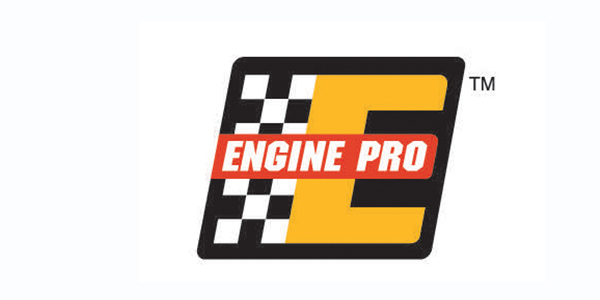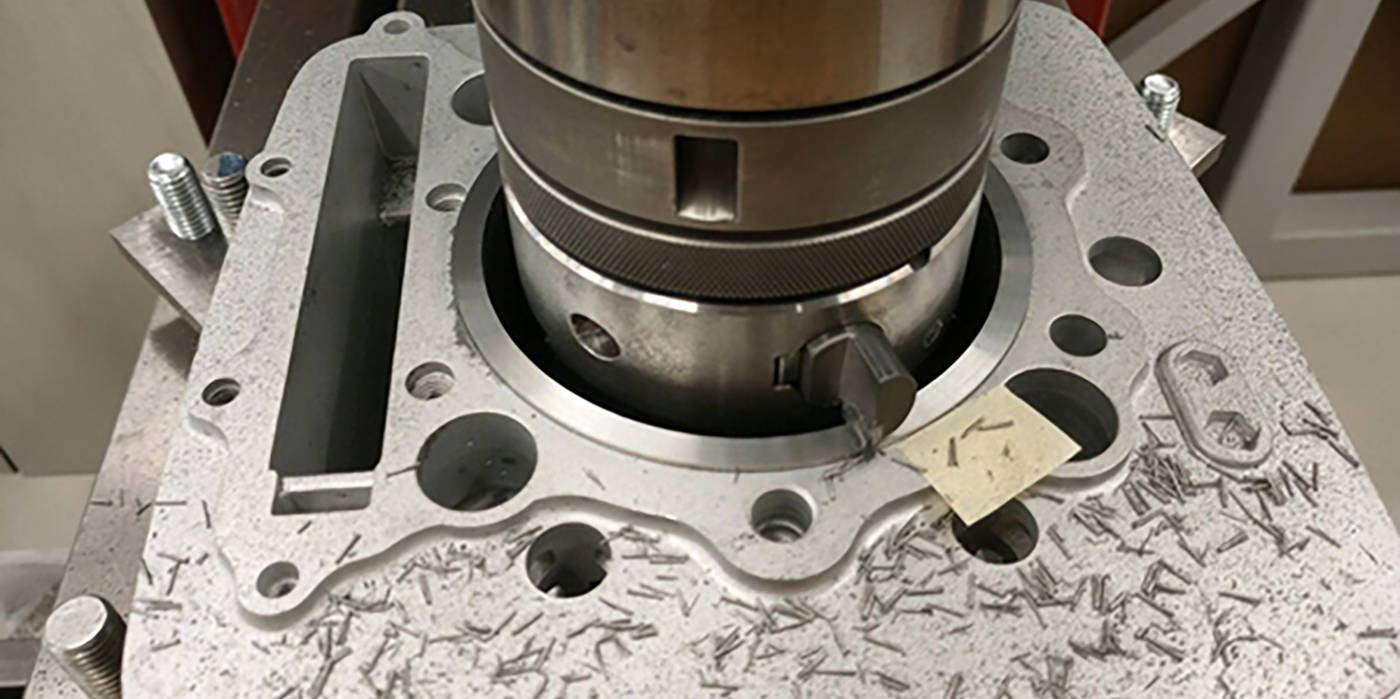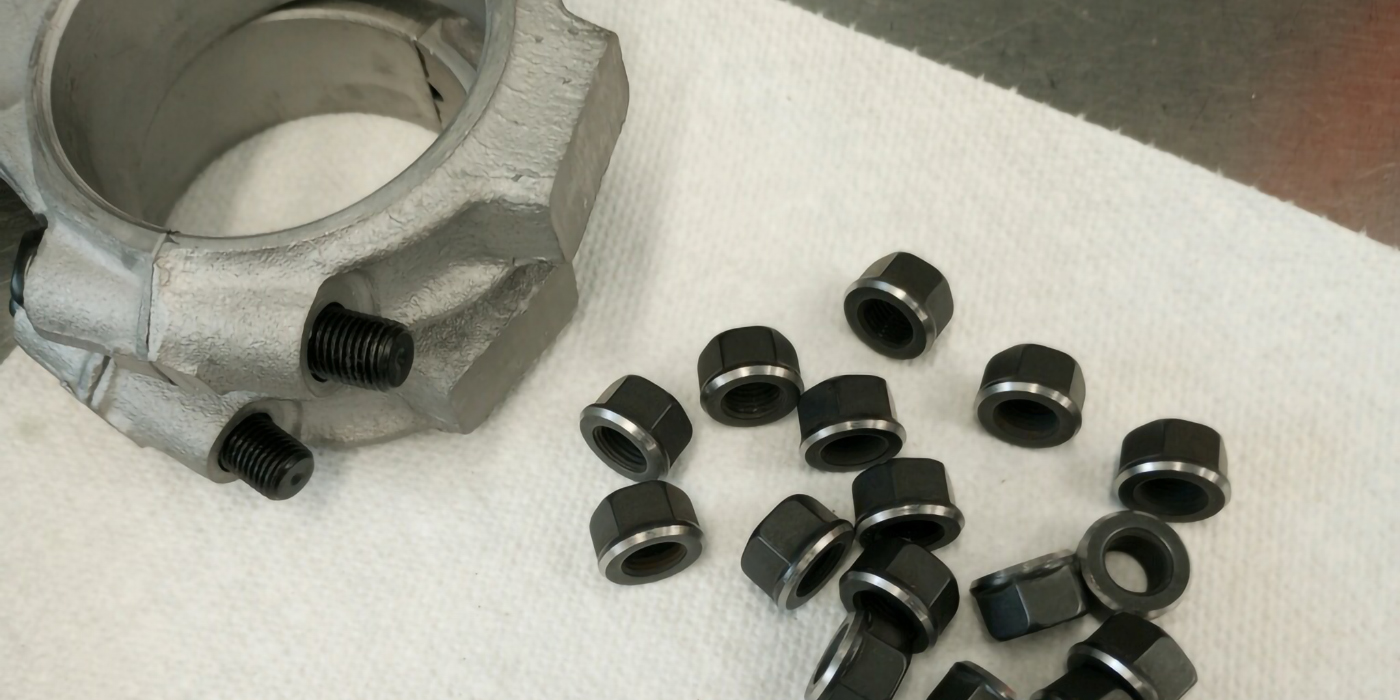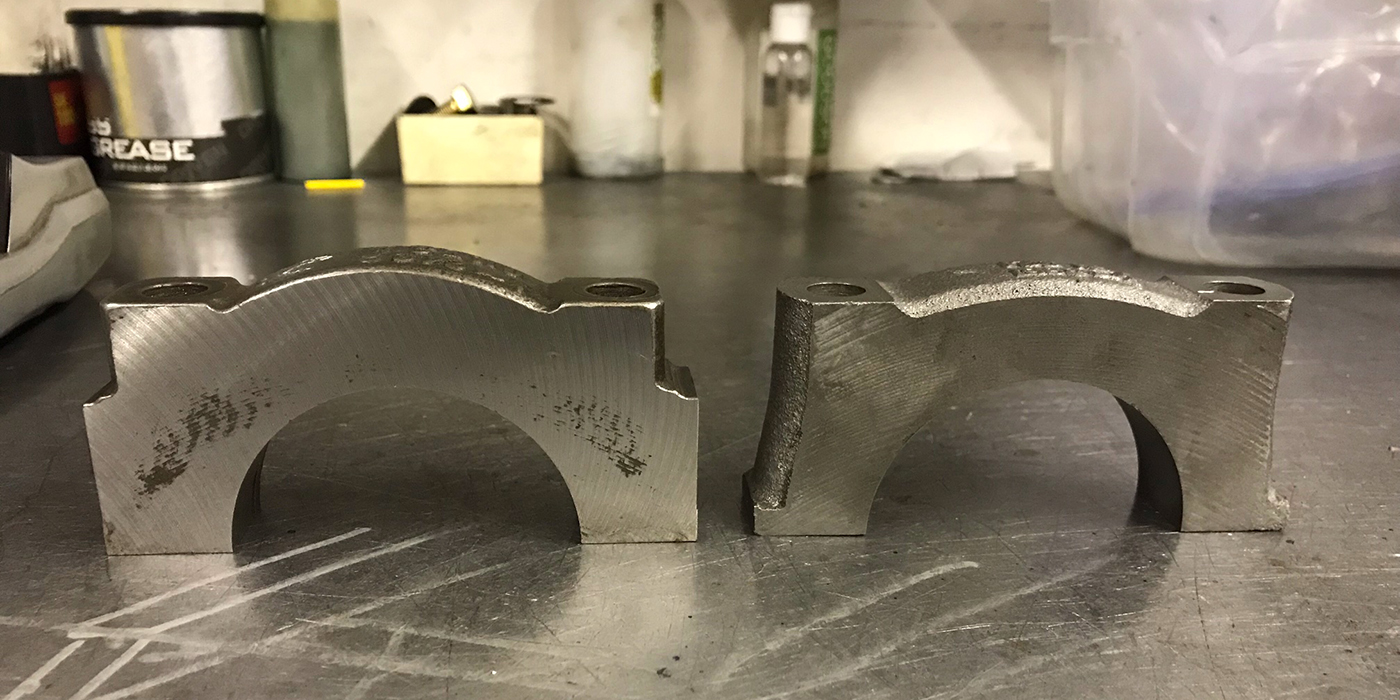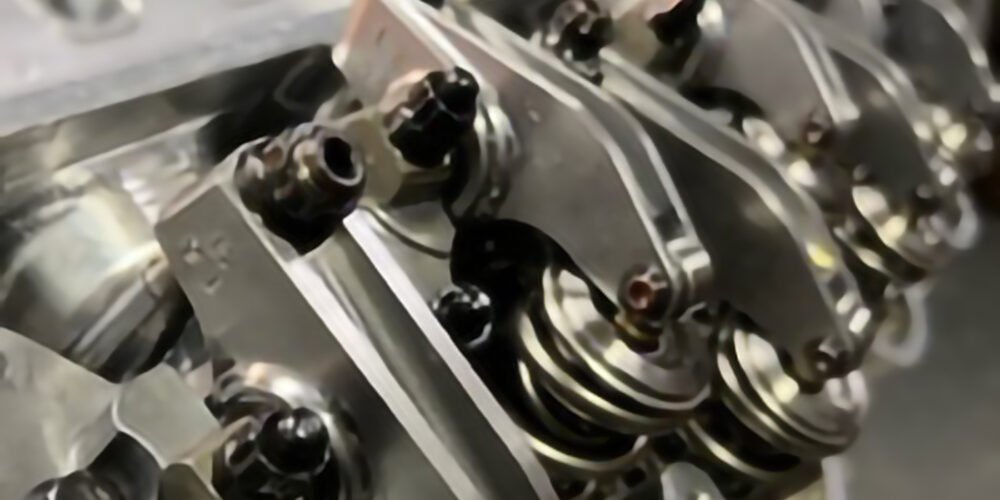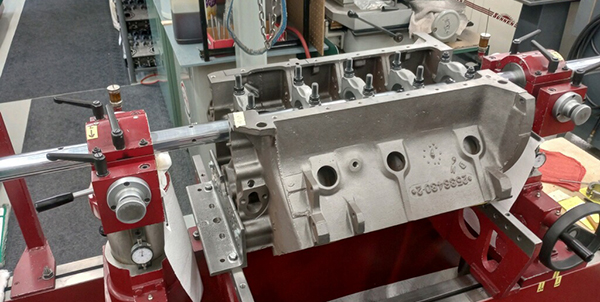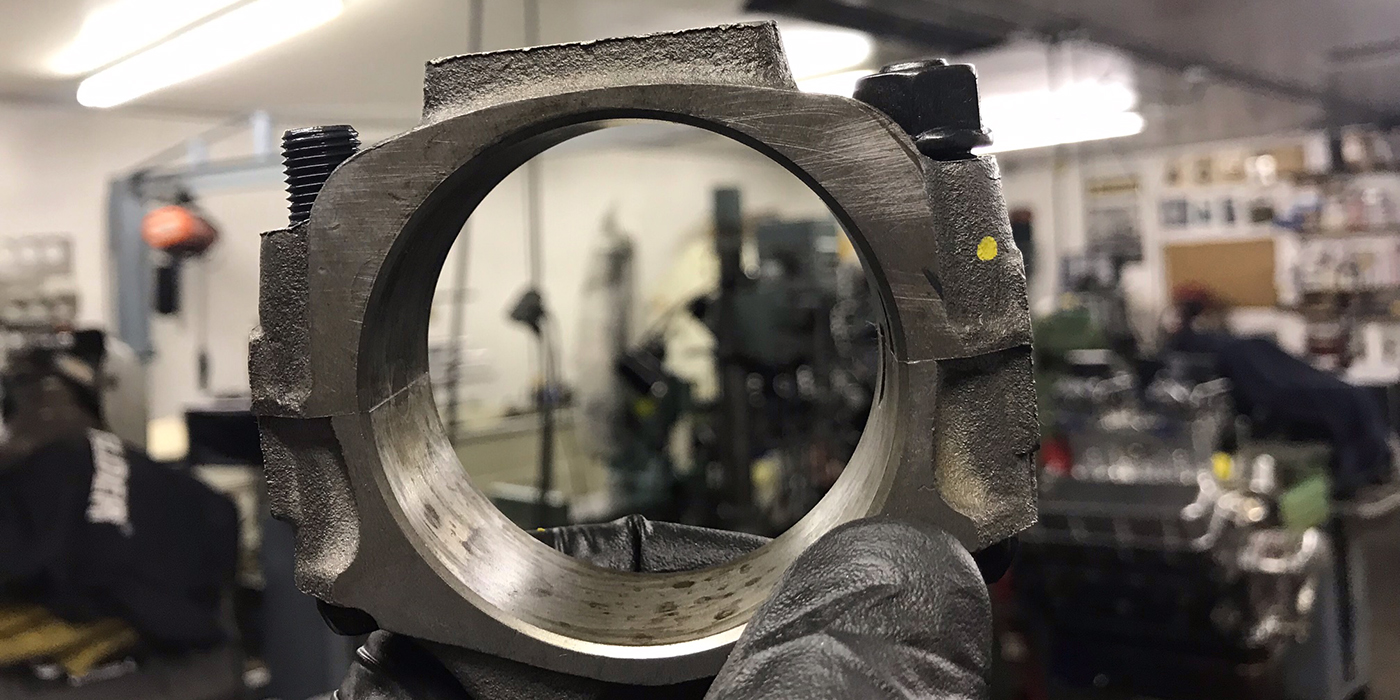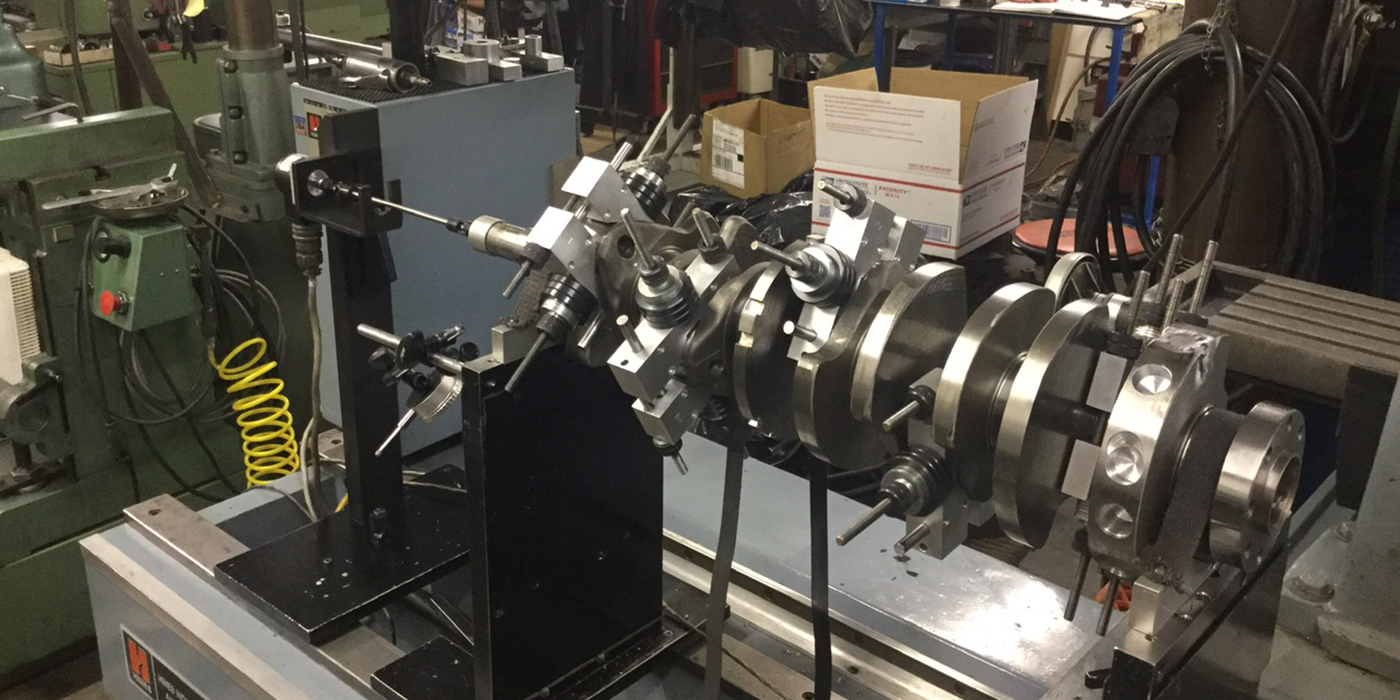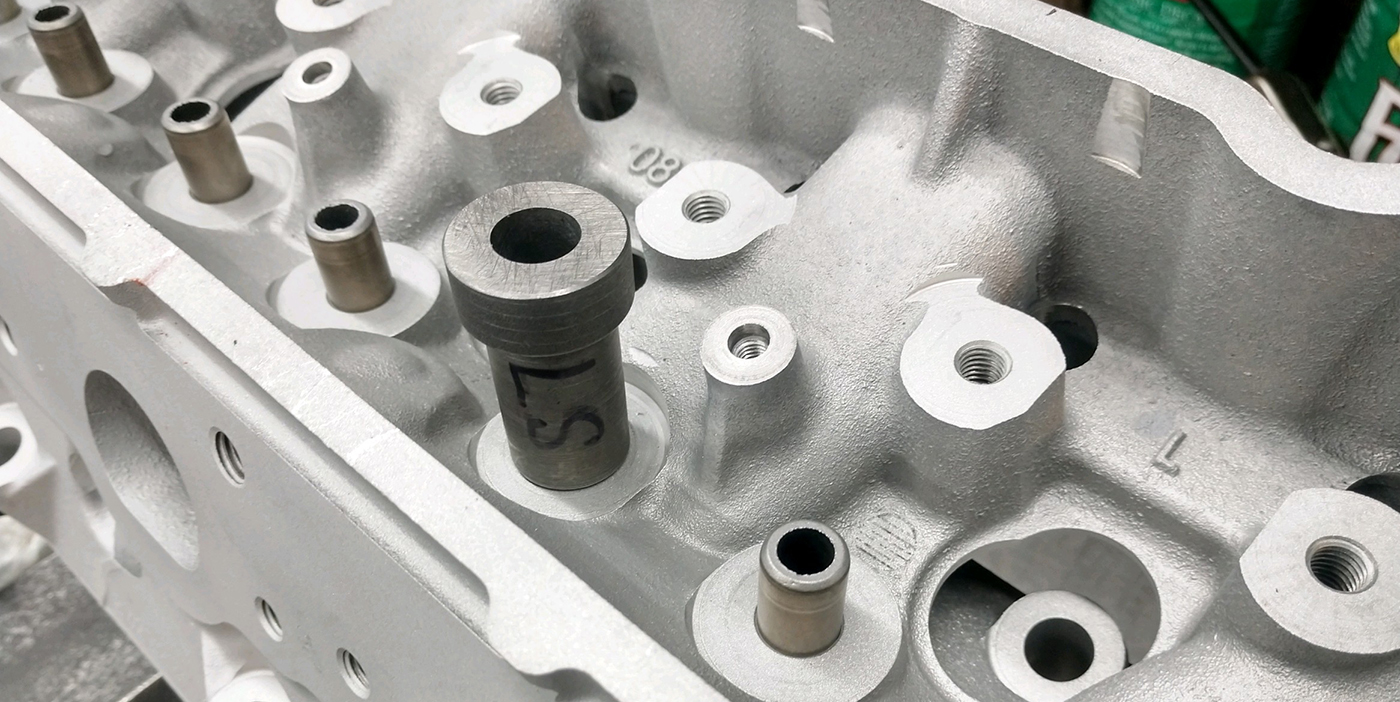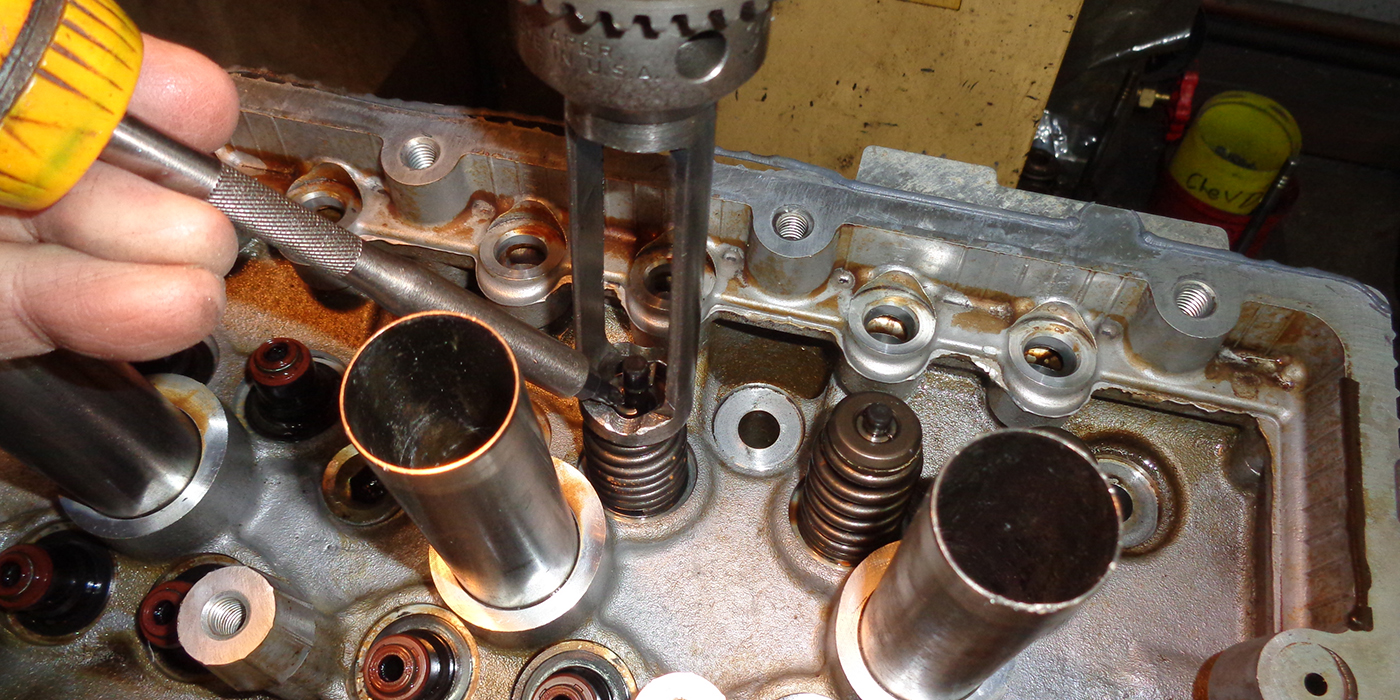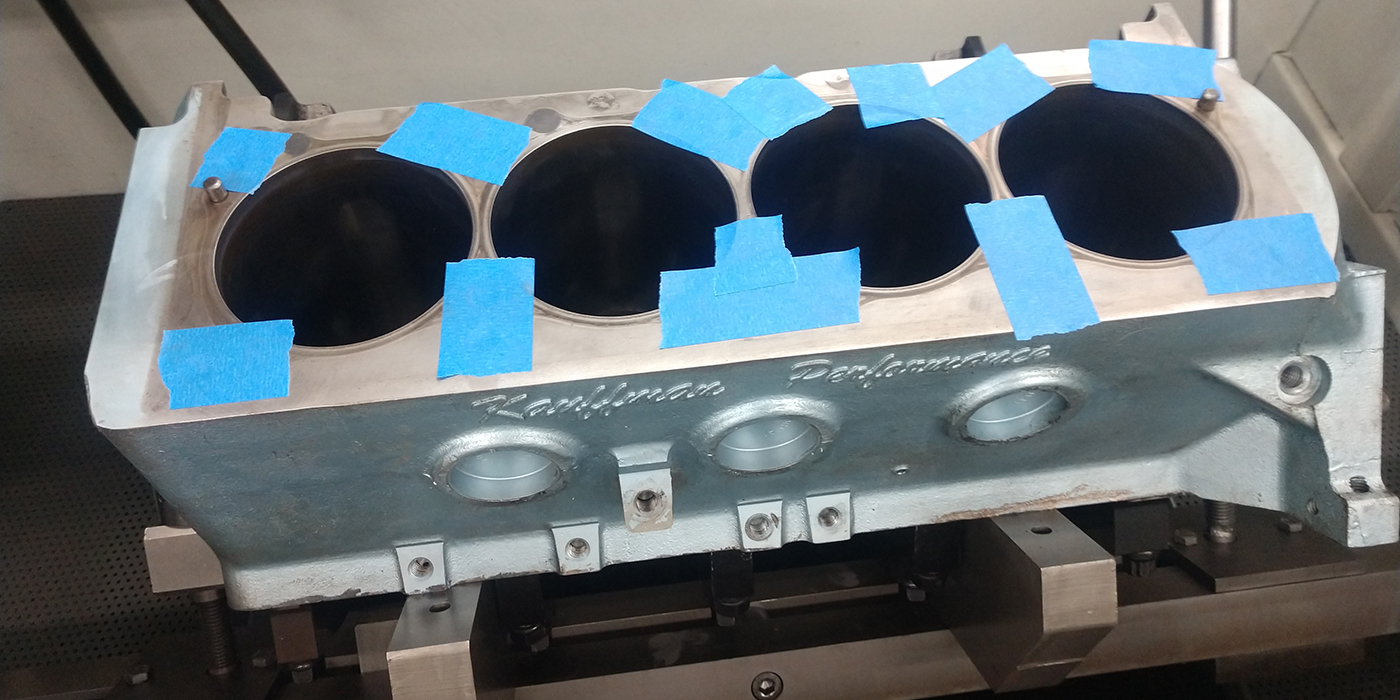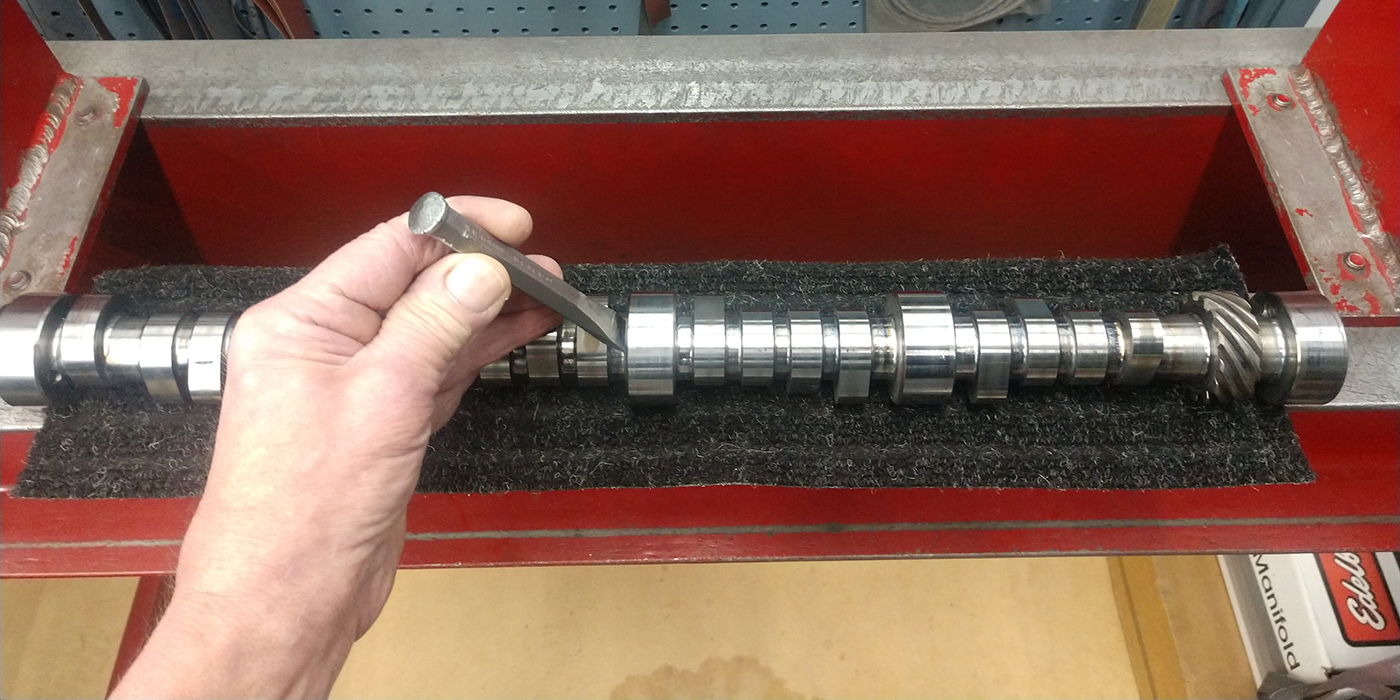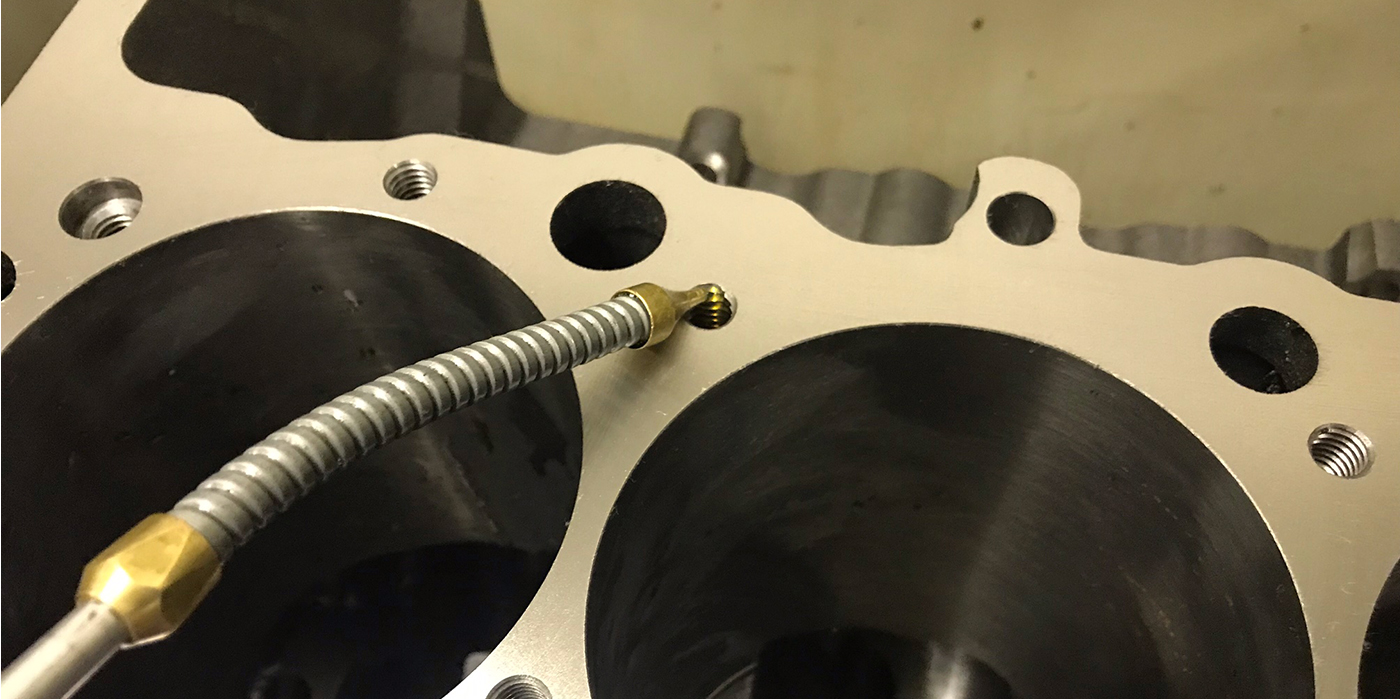DON’T BUST THAT GUIDE
If you’ve been having problems breaking off the end of a valve guide – on the spring end of the guide – when installing thin wall guides, I may have a solution. I machine from the spring cup side of the head instead of the valve seat side. You will have more control and no “break-out”with this method.
Dale Beran
The Parts Bin
Ord, NE.
THE OLD OIL PUMP TRICK
When align honing small or big block Chevrolets I always install an old oil pump on the #5 main cap. The added stress can change the main bore up to .001” to allow for distortion of the bore when the engine is fully assembled.
Joe Foellmer
Advance Engine Rebuilders
Johnsburg, IL
OLD PARTS AS STANDARDS
Here is a quick way to double check your settings on your Dial Bore Gauge or Sunnen AG-300 Rod Gauge. If you have an engine you work on all the time, make a simple standard from old parts to make sure you are set up correctly. I took a couple spare main caps for a small block Chevy and cut a substantial amount off them. I bolted and welded the caps together to secure them well. I sized them with my boring bar and finished to size on a hone. I paint them different bright colors and write their size on them. You can make a selection of main caps, or connecting rods for the common engines you work on. The chances of someone misreading a micrometer during set-up is pretty much eliminated.
Mike Segar
Segar Machine
Bloomington, MN
MANIFOLD MOUNT
Exhaust manifolds can be resurfaced using a surface grinder with the typical universal cylinder head fixture. First start by tapping threads in the thru holes. I have 1/2”, 9/16”, 5/8” & 3/4” all-thread pieces cut to 8” or so, that I screw into the newly threaded holes. I add jam nuts to secure the rods to the manifold.
Then, using two more nuts per rod I pinch the all thread to the fixture, all the while leveling the manifold with a twist of the nuts. Its a cinch and gives a fairly solid anchor while enabling the ability to level end for end.
Darin Driscoll
Automotive Machine & Supply
Ft. Collins, CO
EASY EXHAUST MANIFOLD STUD REMOVAL TIPS
In our shop we use our TIG welder to remove broken exhaust manifold mounting studs from the exhaust side of cylinder heads. For setup we use DC straight polarity with high frequency start, a sharp tungsten electrode protruding about 3/8˝ from the gas cup and a stainless steel filler wire. It is important to use a stainless filler wire for added strength.
The end of the broken off stud, which is usually about 3/16˝ below the surface of the head, must be clean before trying to weld on it. We have found that an electric engraving tool works great for cleaning the end of the broken stud, which is usually rusty or covered with carbon.
Start the arc and melt a puddle about half the diameter of the broken stud, then dab the stainless filler rod into the puddle. Continue to add filler metal until you have built up the broken stud just enough to be able to grab it with a pair of Vice Grips. The heat from welding will usually free the broken stud so that it can be easily removed.
Jerry McLain
McLain’s Automotive Machine Shop
Cuba, MO
CK-4 Diesel Update
Recently diesel engine oils changed from the decade old CJ-4 formulation to the new CK-4 formulation. While intended to be an upgrade, the new formulation has been met with resistance and even an outright “do not use” warning from Ford Motor Co.
The new CK-4 specification went into effect in December of 2016. Just before the launch of this new specification, Ford issued a service bulletin stating that Ford 6.7L diesel engines should not use the new CK-4 oil. In fact, Ford issued a new oil specification closely aligned with the previous CJ-4 spec and called for the use of CJ-4 oils meeting the new Ford specification for their 6.7L diesel engines. Ford identified wear issues as the reason for abandoning the new CK-4 oil specification.
What is the underlying issue with the CK-4 oil? Previous API diesel oil specifications, like the decade old CJ-4, had to pass the ASTM Sequence IIIG valve train wear and oxidation test. This is no longer true of the new CK-4 specification. The Sequence IIIG test measures flat tappet cam and lifter wear as well as other parameters. The significance to both Ford and other users of diesel engine oils is directly tied to the absence of the Sequence IIIG test.
Diesel engine oils have historically contained higher levels of the anti-wear additive ZDDP. With more oil marketers wishing to supply “universal” oils that meet both API SN requirements for gasoline engines as well as API CK-4 requirements for diesel engines, the levels of ZDDP have dropped in some CK-4 oils. Without the Sequence IIIG flat tappet cam wear test, it appears some of these lower ZDDP diesel oils are causing increased wear in diesel engines. This should be a word of caution for all users of diesel engine oil, regardless if you’re using it in a 6.7L Ford or not.
Engine Pro Technical Committee with special thanks to Driven Racing Oil

